Abstract
Long-term complications of pterygium excision and beta irradiation in 63 eyes of 57 patients are described. The age of the patients at treatment ranged from 27 to 69 years (mean 48 +/- 11), and complications were assessed 3 to 20 years later (mean 12 +/- 3). The pterygia were excised, leaving bare sclera, and beta irradiation of total dose 750 to 5200 rads (mean 3475 +/- 916) was given, except in 7 patients who had repeated courses or overlapping fields of beta irradiation. Scleral ulceration was present in 51 eyes and sectorial lens opacities with normal visual acuity (VA) in 19 eyes. Radiation induced cataract occurred in 3 eyes, with reduced vision. Ptosis, symblepharon, and iris atrophy were also seen. Pseudomonas endophthalmitis occurred in 4 patients with scleral ulceration. Beta irradiation to prevent recurrence of pterygia is a significant cause of iatrogenic ocular disease. There is a need to modify the beta irradiation dosimetry at present in use.
Full text
PDF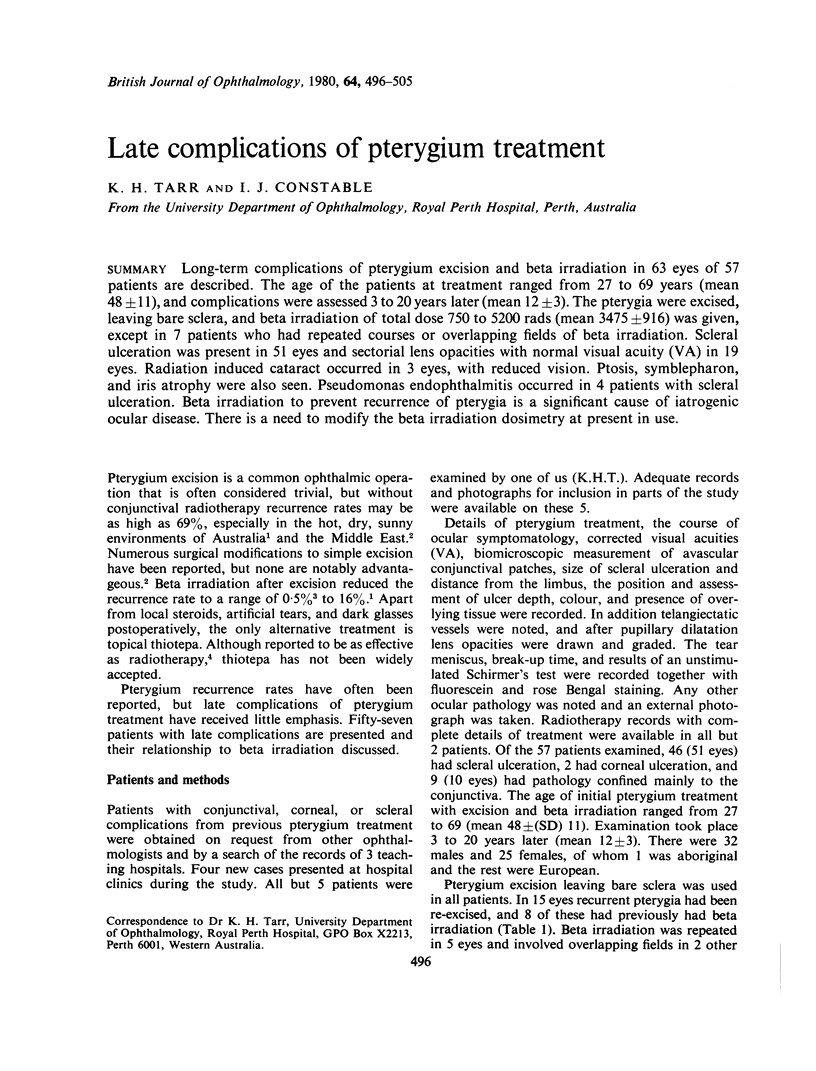
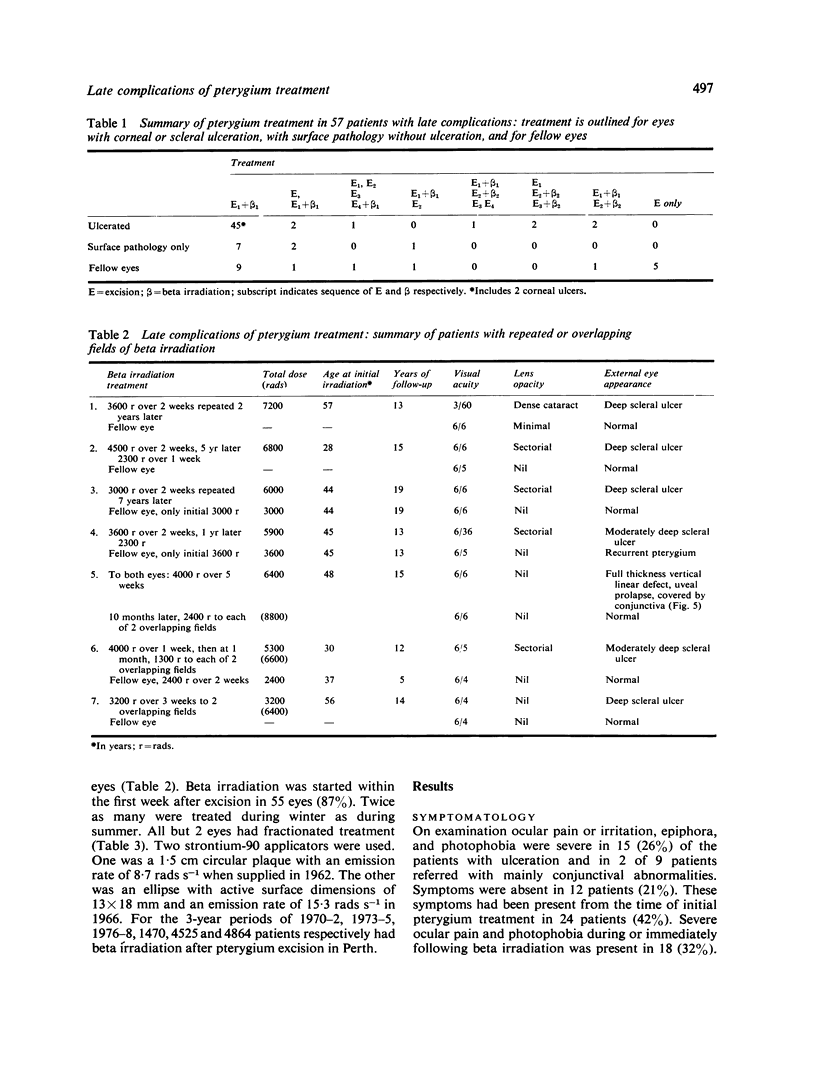
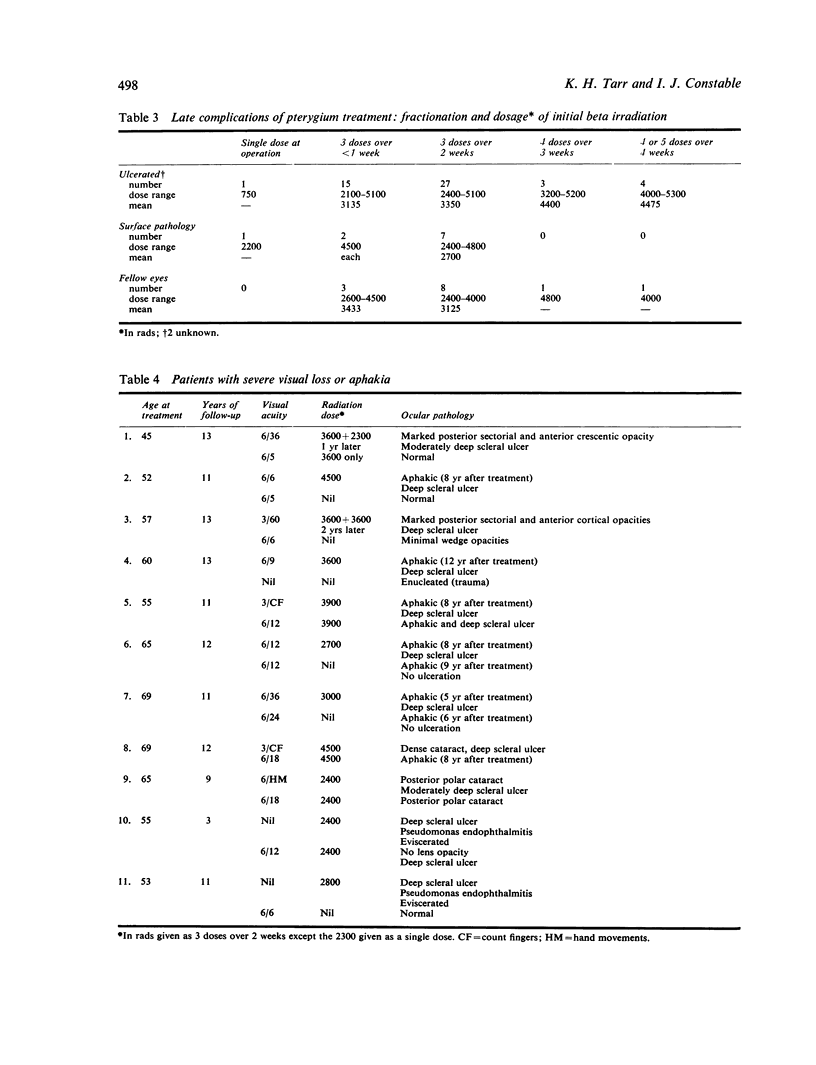
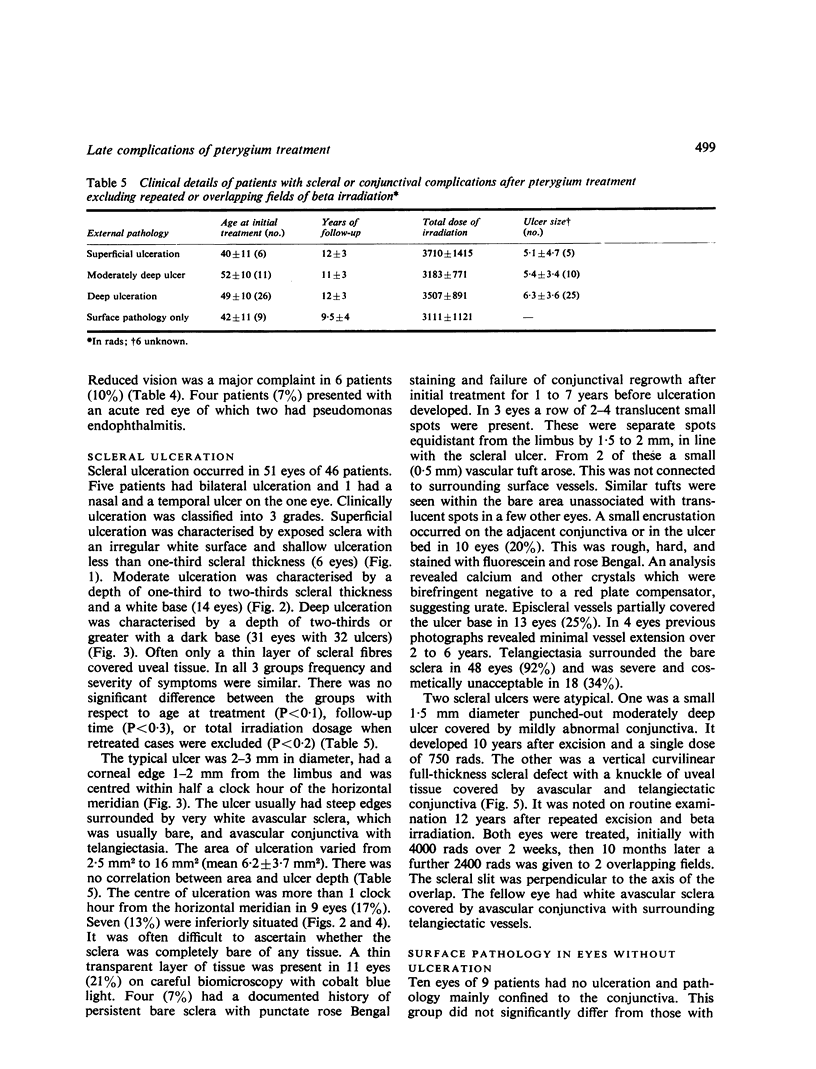
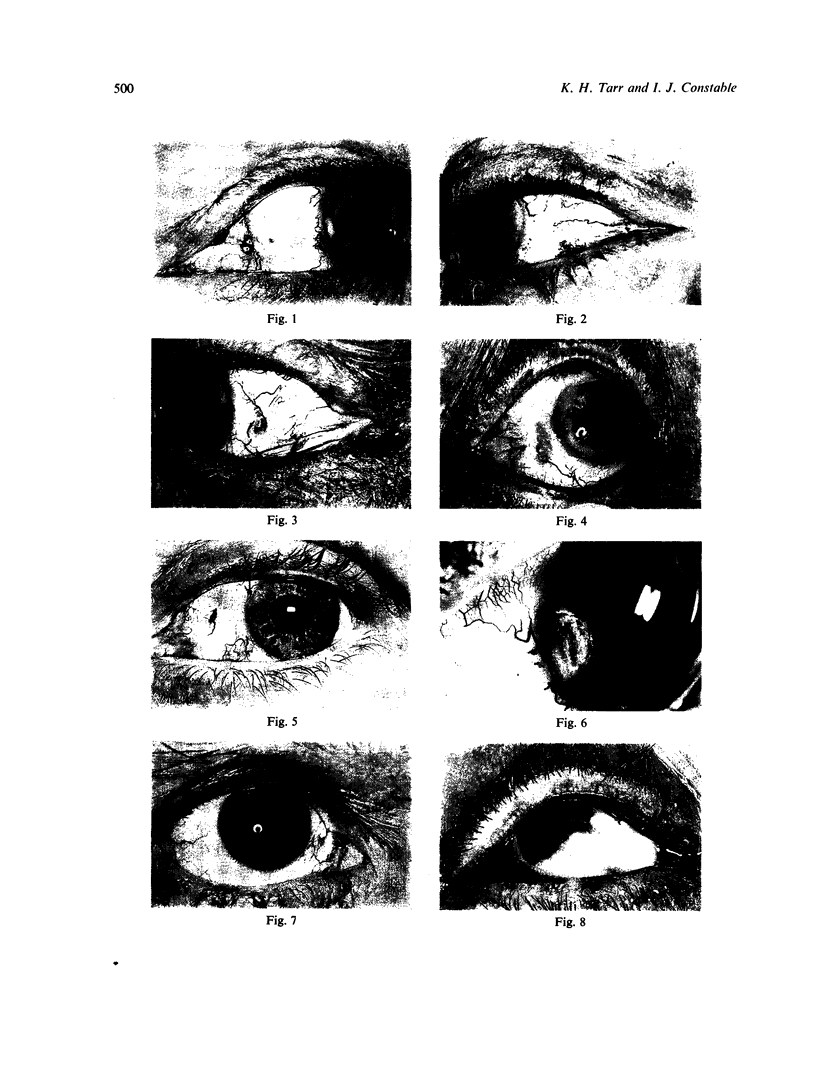
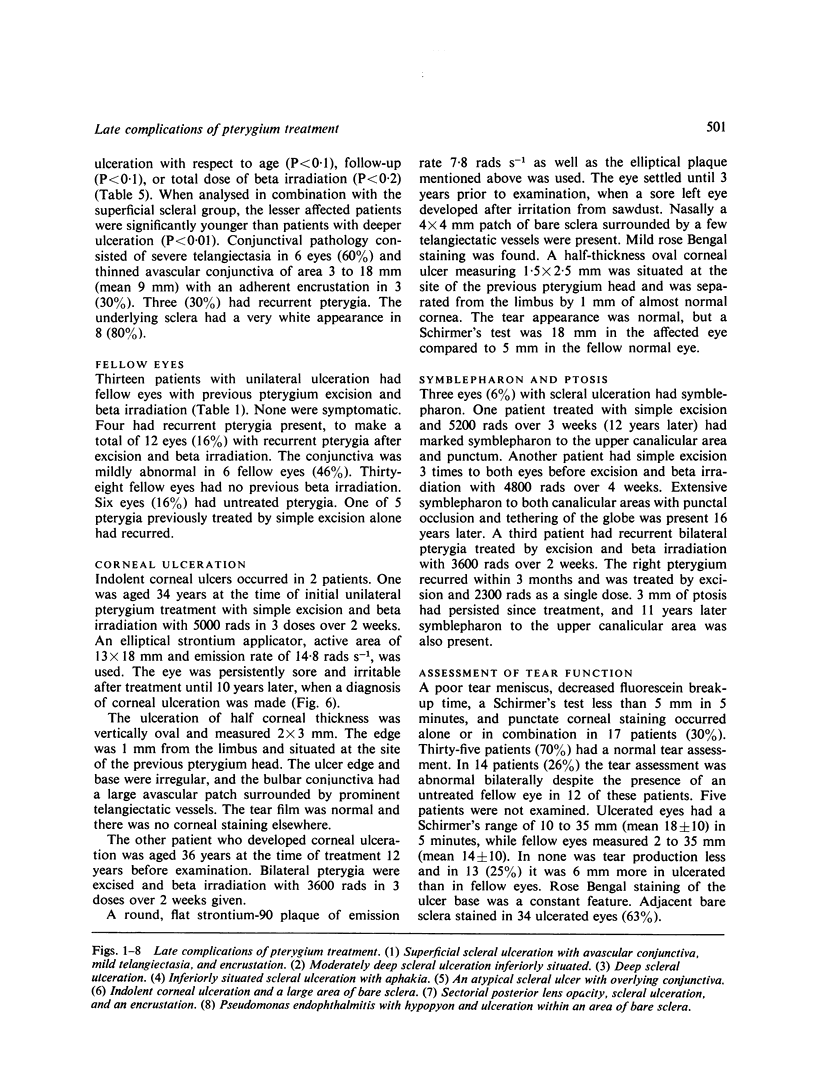
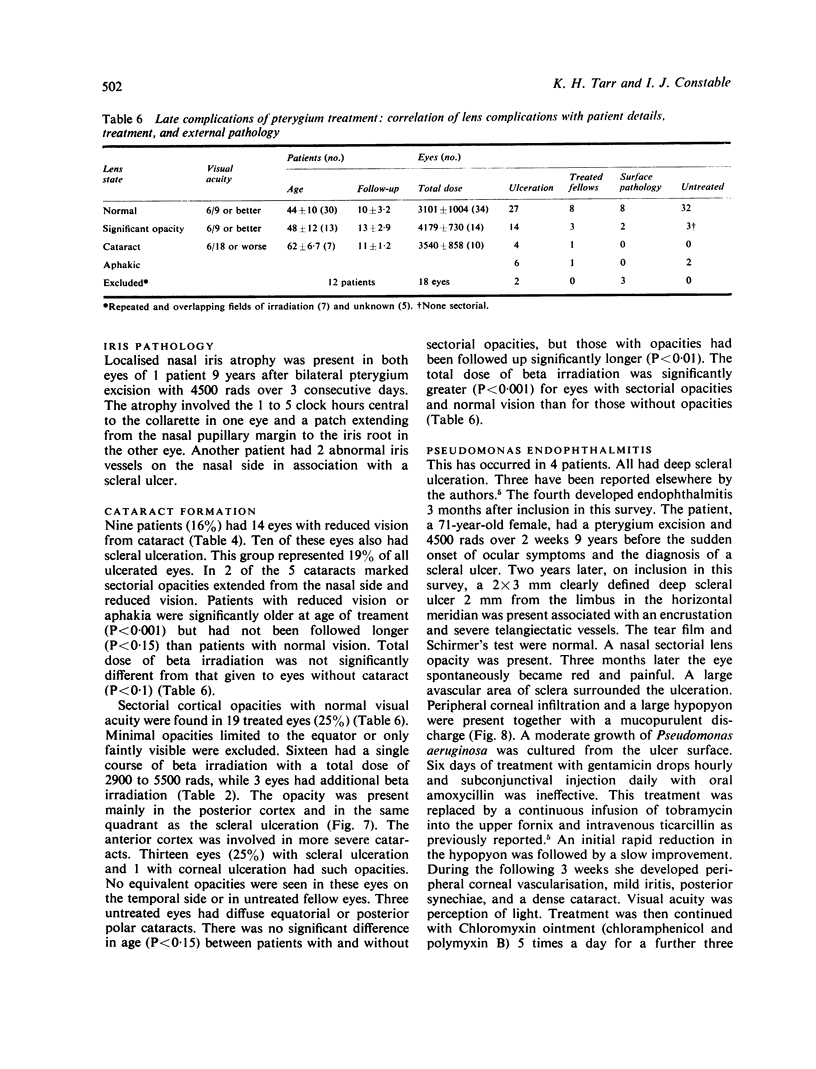
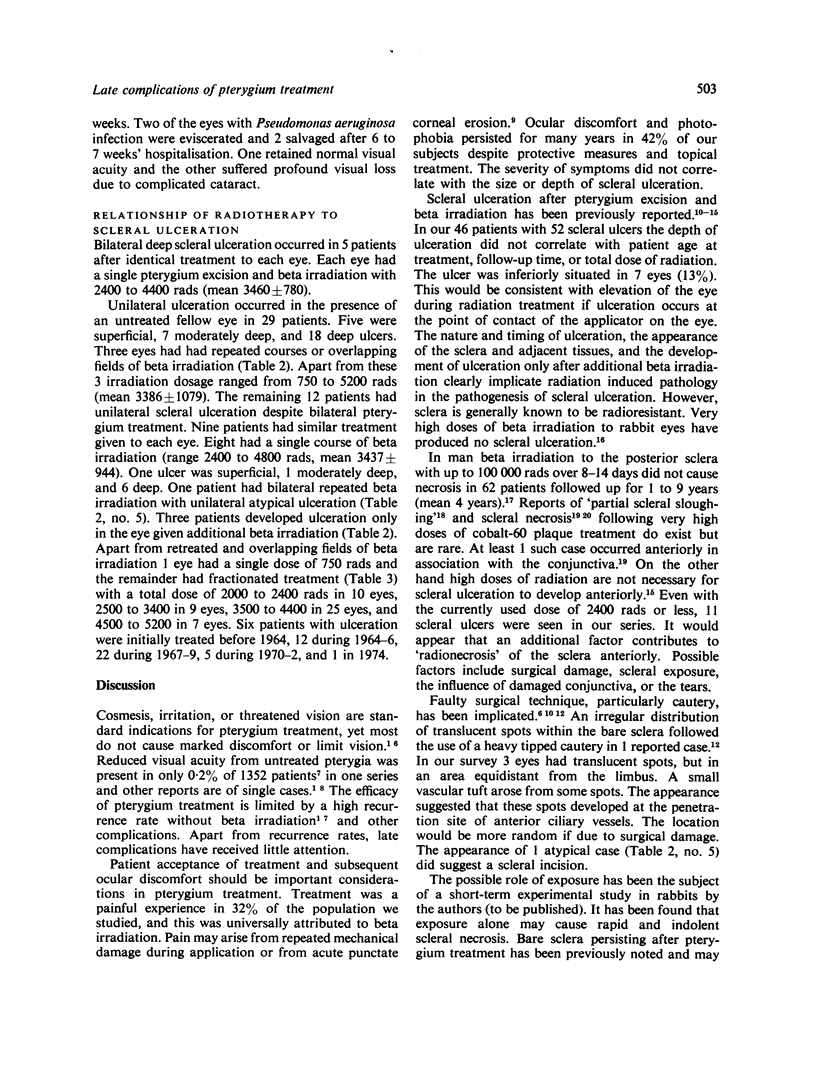

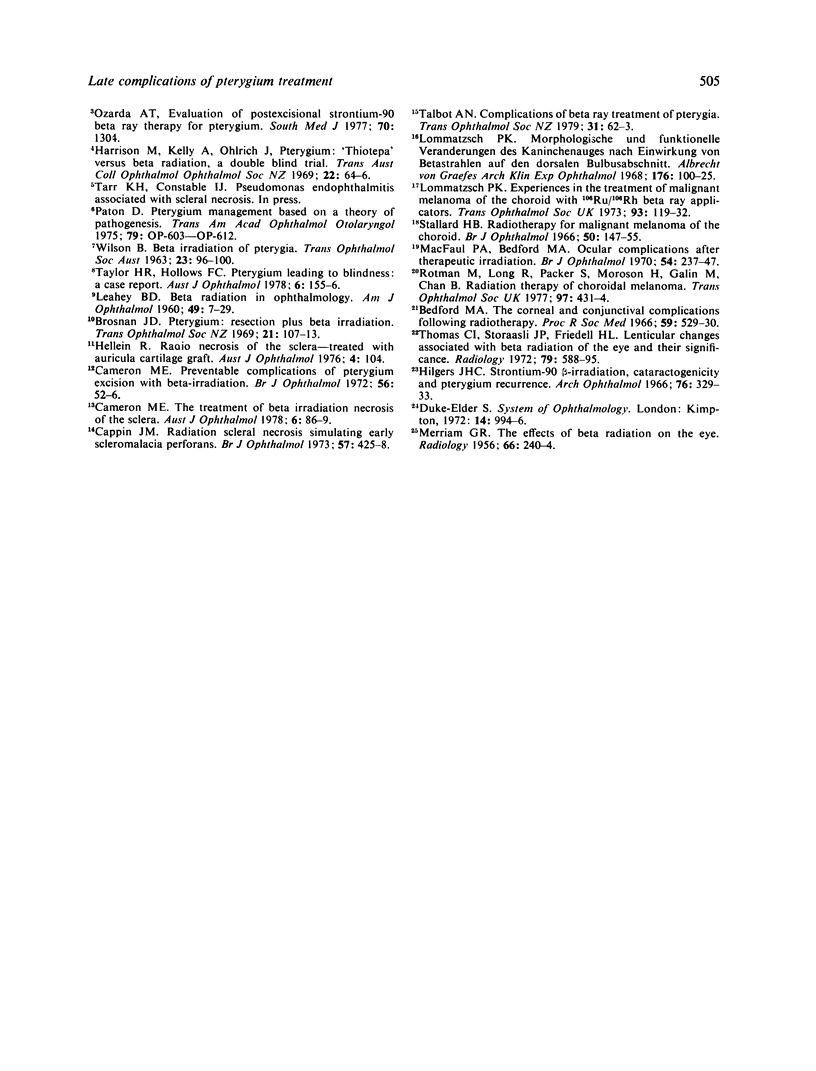
Images in this article
Selected References
These references are in PubMed. This may not be the complete list of references from this article.
- Cameron M. E. Preventable complications of pterygium excision with beta-irradiation. Br J Ophthalmol. 1972 Jan;56(1):52–56. doi: 10.1136/bjo.56.1.52. [DOI] [PMC free article] [PubMed] [Google Scholar]
- Cappin J. M. Radiation scleral necrosis simulating early scleromalacia perforans. Br J Ophthalmol. 1973 Jun;57(6):425–428. doi: 10.1136/bjo.57.6.425. [DOI] [PMC free article] [PubMed] [Google Scholar]
- LEAHEY B. D. Beta radiation in ophthalmology. Am J Ophthalmol. 1960 Jan;49:7–29. doi: 10.1016/0002-9394(60)92660-x. [DOI] [PubMed] [Google Scholar]
- Lommatzsch P. K. Experiences in the treatment of malignant melanoma of the choroid with 106Ru-106Rh beta-ray applicators. Trans Ophthalmol Soc U K. 1973;93(0):119–132. [PubMed] [Google Scholar]
- Lommatzsch P. Morphologische und funkjtionelle Veränderungen des Kaninchenauges nach Einwirkung von Betastrahlen (106Ru-106Rh) auf den dorsalen Bulbusabschnitt. Albrecht Von Graefes Arch Klin Exp Ophthalmol. 1968;176(2):100–125. doi: 10.1007/BF02385041. [DOI] [PubMed] [Google Scholar]
- MERRIAM G. R., Jr The effects of beta radiation on the eye. Radiology. 1956 Feb;66(2):240–245. doi: 10.1148/66.2.240. [DOI] [PubMed] [Google Scholar]
- Macfaul P. A., Bedford M. A. Ocular complications after therapeutic irradiation. Br J Ophthalmol. 1970 Apr;54(4):237–247. doi: 10.1136/bjo.54.4.237. [DOI] [PMC free article] [PubMed] [Google Scholar]
- Ozarda A. T. Evaluation of postexcisional strontium 90 beta ray therapy for pterygium. South Med J. 1977 Nov;70(11):1304–1304. doi: 10.1097/00007611-197711000-00017. [DOI] [PubMed] [Google Scholar]
- Rotman M., Long R. S., Packer S., Moroson H., Galin M. A., Chan B. Radiation therapy of choroidal melanoma. Trans Ophthalmol Soc U K. 1977 Sep;97(3):431–435. [PubMed] [Google Scholar]
- Stallard H. B. Radiotherapy for malignant melanoma of the choroid. Br J Ophthalmol. 1966 Mar;50(3):147–155. doi: 10.1136/bjo.50.3.147. [DOI] [PMC free article] [PubMed] [Google Scholar]
- THOMAS C. I., STORAASLI J. P., FRIEDELL H. L. Lenticular changes associated with beta radiation of the eye and their significance. Radiology. 1962 Oct;79:588–597. doi: 10.1148/79.4.588. [DOI] [PubMed] [Google Scholar]
- Talbot A. N. Complications of beta ray treatment of pterygia. Trans Ophthalmol Soc N Z. 1979;31:62–63. [PubMed] [Google Scholar]
- WILSON B. BETA IRRADIATION OF PTERYGIA. Trans Ophthalmol Soc Aust. 1963;23:96–100. [PubMed] [Google Scholar]
- Youngson R. M. Pterygium in Israel. Am J Ophthalmol. 1972 Nov;74(5):954–959. doi: 10.1016/0002-9394(72)91217-2. [DOI] [PubMed] [Google Scholar]










